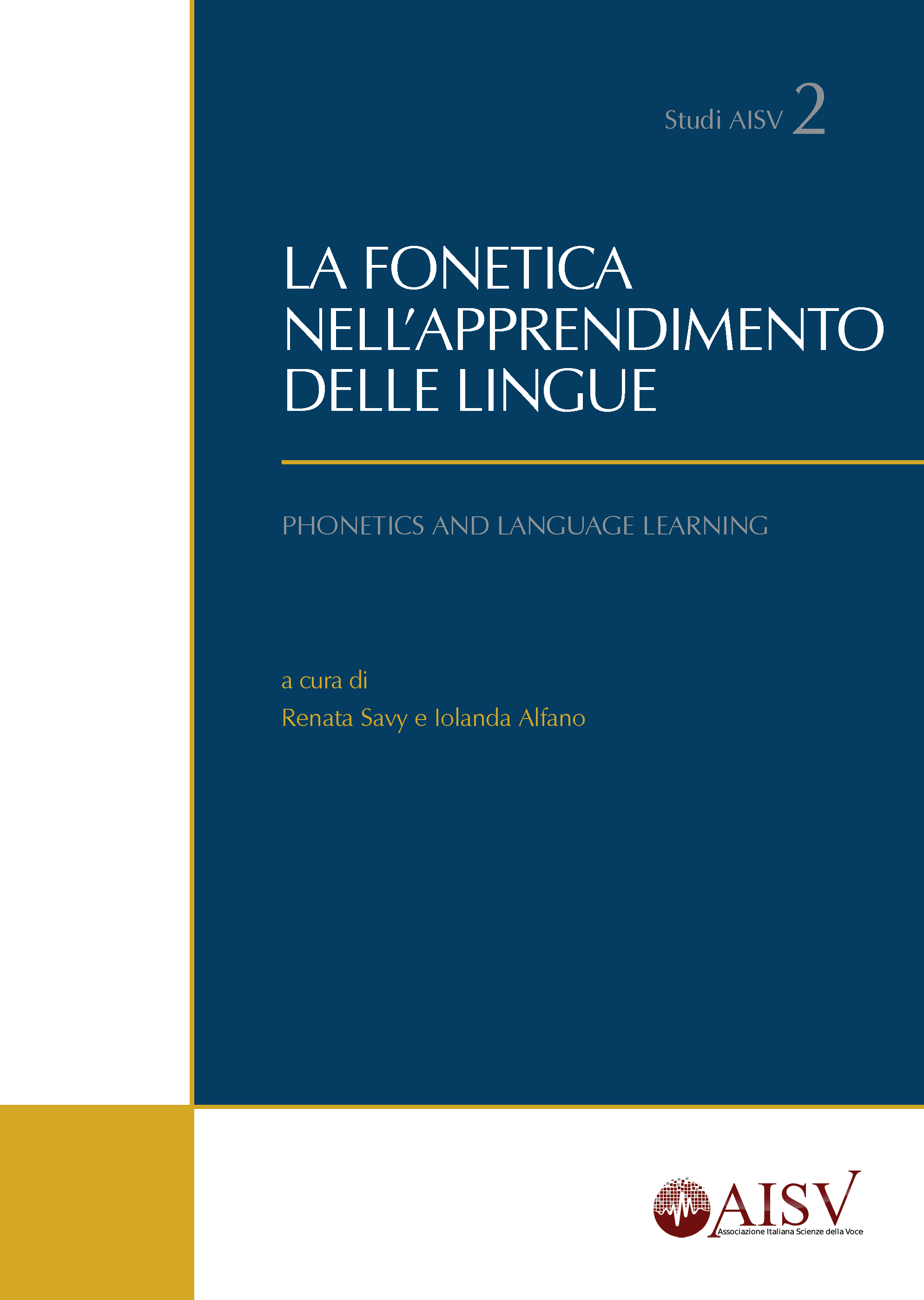Continuation rise in Arabic L1 and Italian L2
Prosodic and pragmatic analysis of semispontaneous conversations
DOI:
https://doi.org/10.17469/O2102AISV000008Keywords:
L2, Arabic, Italian, non-finality, communicationAbstract
This study presents an acoustic analysis of the non-final sentences. Analysis is conducted on conversations elicited by the ‘Show-The-Difference-technique’. It consists of about 260 tone units in Italian L1 of Roman speakers, in Cairene Arabic and in Italian L2, produced by the same Egyptian informants. Analysis of a corpus in Italian L1 allows comparisons within a homogeneous material. ToBI transcription of the final contour has been conducted and then investigated phonetically by calculating both the slope on the last three syllables and the alignment of H target on the last accented syllable. The final rise is found to be the major clue of non-finality, while low target as a boundary tone appears more in L2. Differences between Arabic L1 and Italian L2 in slope and vowel duration show that even under the positive transfer hypothesis, speakers do not copy their mother tongue in the L2. However, Italian L1 and L2 show discrepancies in pitch accent types and in slope as well.This study presents an acoustic analysis of the non-final sentences. Analysis is conducted on conversations elicited by the ‘Show-The-Difference-technique’. It consists of about 260 tone units in Italian L1 of Roman speakers, in Cairene Arabic and in Italian L2, produced by the same Egyptian informants. Analysis of a corpus in Italian L1 allows comparisons within a homogeneous material. ToBI transcription of the final contour has been conducted and then investigated phonetically by calculating both the slope on the last three syllables and the alignment of H target on the last accented syllable. The final rise is found to be the major clue of non-finality, while low target as a boundary tone appears more in L2. Differences between Arabic L1 and Italian L2 in slope and vowel duration show that even under the positive transfer hypothesis, speakers do not copy their mother tongue in the L2. However, Italian L1 and L2 show discrepancies in pitch accent types and in slope as well.
Downloads
Published
Issue
Section
License

This work is licensed under a Creative Commons Attribution-NonCommercial 4.0 International License.





